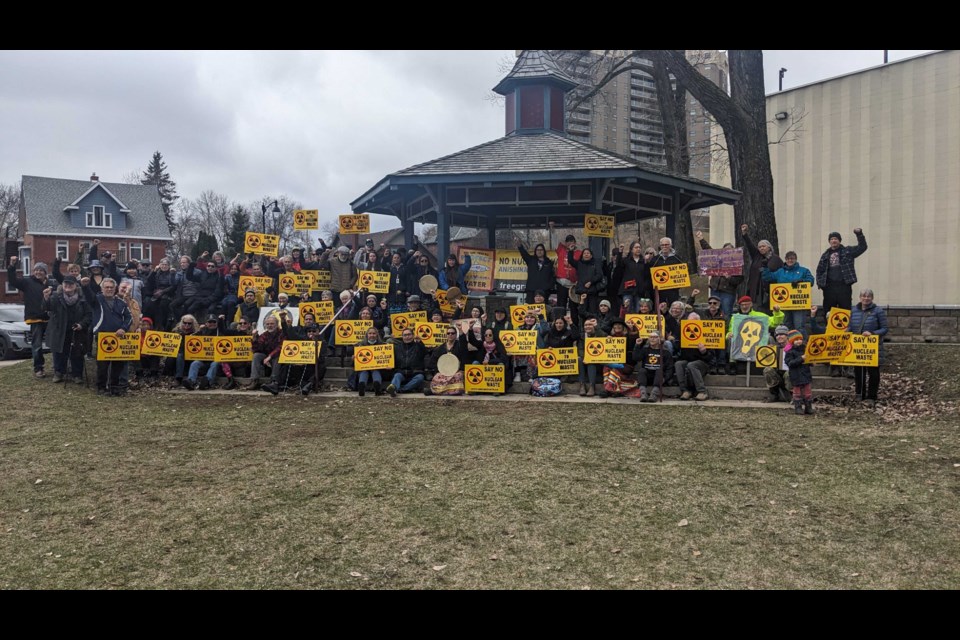Onigaming First Nation Chief Jeff Copenace says his Ojibwe community has reacted with strong emotions to the Nuclear Waste Management Organization’s decision to build a nuclear waste facility in the Ignace-Wabigoon area of northwestern Ontario.
“My reaction is a little bit of anger, a little bit of sadness, but I’m not sure that I’m surprised,” Copenace said Nov. 28 just hours after the NWMO announced its selection of the Revell Lake site for its deep geological repository project.
Onigaming is located south of Kenora, in the Nestor Falls area.
One reason the decision wasn’t very surprising was “the recent announcement from the Wabigoon Lake Ojibway Nation to proceed with the process,” he said.
Wabigoon Lake, a fellow Treaty 3 community northeast of Onigaming, held a referendum of its members that resulted in a yes vote for proceeding as a potential host for the deep-underground repository that the NWMO wants to build.
The vote tally for the referendum has not been disclosed, but Wabigoon Lake’s chief told Newswatch it was “an overwhelming mandate to continue to the next phase of this project.”
Copenace said he received a lot of phone calls after the NWMO announced its siting decision and “I am hearing surprise and a little bit of anger in the community.”
There are worries about the safety of transporting nuclear waste and storing it underground in the Wabigoon-English River watershed, he said.
He added that the nuclear waste repository’s critics will carry on in opposing it.
There are a still “a number of regulatory hurdles ahead” for the NWMO, and the repository’s opponents will present against it, he said.
Copenace noted a recent letter to the NWMO signed by the chiefs of 12 First Nations “who can speak for the lands and the waters.”
The letter to NWMO president Laurie Swami expressed concern over “the potential for spills or leaks that could happen on site, or while the waste is being transported through their communities, watersheds, air sheds and lands they rely on for their way of life.”
Copenace was among the chiefs who signed the letter, which said they have not been consulted about the industry-funded nuclear organization’s plans for transportation and storage of radioactive waste.
The nuclear waste would have to be transported through “numerous First Nations’ territories” to get to the Revell site, Copenace noted.
Rudy Turtle, chair of the First Nations Land Defence Alliance and former chief of Grassy Narrows First Nation, said his First Nation remains opposed to the NWMO’s project.
“We're looking at it from the perspective of long-term effects,” he said. “If there's ever an accident or in the future if there's a leak of any kind, it's going to be devastating to the environment.
“So that’s how we’re looking at things. The thought of having nuclear waste next door or down east from us has people very worried.”
The NWMO announced its selection of the Revell site between Wabigoon Lake and Ignace in a news release Thursday morning.
In a written statement released in the afternoon, Wabigoon Lake Ojibway Nation described potentially hosting a repository for used nuclear fuel as “one of the most important responsibilities of our time.
“We cannot ignore this challenge and allow it to become a burden for future generations,” the statement continued. “Our membership spoke with a clear voice in our willingness decision that we have the bravery and courage to continue to the next phase of this project.”
Construction of the proposed deep geological repository, if it clears regulatory and licensing hurdles, could begin in 2033 and end about 10 years later, according to the NWMO.




